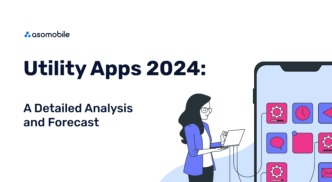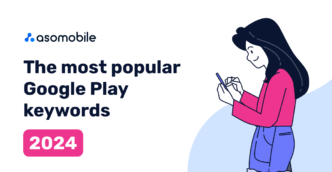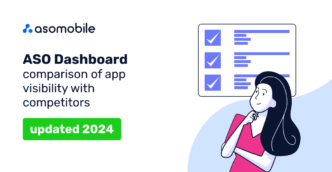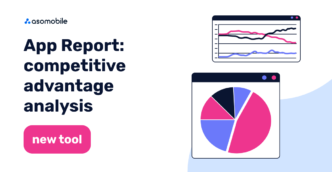Mobile User Acquisition in 2024: Trends and Forecasts
Attracting mobile app users in 2024 is more important than ever. The mobile app market is filled with competition, rapid changes in user preferences and habits, and technological progress. It requires a strategic approach to stand out and ensure user engagement. In fact, this is not news because we have already written about these trends for the current year.
One of the most frustrating situations for app developers is having an amazing product, but almost no one uses it as the market becomes more saturated. One more thing: the reality is that we can lose up to 80% of our users in the first three days after installation. And even more during the first three months. Therefore, the user acquisition process should compensate for this loss, and the user retention process should reduce it. So, User Acquisition is not just a strategy for developing our application but also a survival strategy.
Some statistics:
By the end of 2023, there will be more than 6.92 billion smartphone users in the global mobile market, representing about 85% of the world population. The two largest app stores, the App Store and Google Play have approximately 5.5 million apps. At the end of this year alone, more than 1 million apps were added to Google Play, and fewer than 400 thousand based on iOS.
Finding your place in a saturated space, from gaining visibility to positions in search results, is difficult. Intense competition has other consequences, too. For example, if an application is at the Top of the selection, it is much more difficult to compete with it.
The mobile app world would be wonderful if users organically found our app and installed it, but it's not that simple. That is why the topic of attracting users remains a trend in 2024.
Realities of the mobile app market
Despite the positive dynamics and growth in all indicators, we should not lose sight of the situation in the global market. Which still shows signs of crisis, the threat of recession, and global instability. That is why an economic effect should be one of the most important vectors of our strategic development. And now we are not talking about - we will increase the subscription price, which will do. We need to consider methods of attracting new users in terms of their financial efficiency.
Now, it is extremely important to increase the profitability of our investments in promotion, which will help keep budgets within reason. So, it’s time to discuss two approaches to pricing mobile app marketing.
CPI and CPA - which to choose?
In pursuit of new users, we can rely on two pricing methods - which one to choose depends on our approaches and budgets. Let's figure it out:
CPI or cost per install. This metric can be easily calculated by dividing the costs we incurred to attract new users by the number of those users. We will determine how much each new user costs due to a particular acquisition campaign. And by comparing this indicator with the income from each new user, we will see the result of our efforts.
CPA or cost per action. Everything is a little more complicated here since a certain action or interaction is involved. Installing an app is not considered a targeted action; its role is played by registration or purchases and subscriptions by the user. The price is determined as the quotient of the total costs of the campaign and the number of targeted actions that occurred.
These two models have different goals, and if CPI is precisely aimed at the influx of new users, then CPA is the influx of higher-quality, targeted users because they are determined to interact with our application for a longer time.
A trend that will continue in the coming year is that mobile games will continue to be the primary cost-per-install (CPI) category, while all other apps will gradually move to cost-per-acquisition (CPA).
Paid and free UA in 2024
Paid user acquisition is advertising that provides us with an influx of users. Sources are social and advertising networks.
Free user acquisition is organic traffic thanks to search engine optimization on ASO app stores.
The first requires money but works quickly, and the second is free but takes time. Let’s make it clear right away that if users are needed for yesterday, this is, of course, a paid UA, but we don’t forget ASO either. The best thing that can be offered in 2024 (as well as the current and previous ones) is a combination of tools and opportunities for paid and free user acquisition. This is a relationship, a cycle - to start a launch with the help of paid attraction, ensuring further organic growth, as visibility in search results and recognition among the audience will appear.
The further you go, the more varied and targeted advertising placements become. Defining our target audience, habits, and “habitats” determines promotion channels. We are unlikely to meet Zoomer users on Facebook, so our path is the path of TikTok. Social networks and content platforms directly depend on age, cultural, and demographic factors - both our application and game and the users we are trying to attract.
AdSpy Tools like BigSpy can help identify top-performing ads across platforms like Facebook, TikTok, and Instagram, giving valuable insights into competitors’ strategies. This makes defining our target audience, habits, and “habitats” much easier, which, in turn, determines the most effective promotion channels.
Types of advertising. If we have decided on the places, it’s time to talk about how in what form we want to appear in front of target users. We have a wide range of possibilities at our disposal:
- Video advertising, especially in games, is the most effective. This advertising format will allow us to demonstrate the gameplay in all its glory. And even more so, reproducible advertising will allow you to test the game without installation.
- Influencer marketing. A trend of recent years that can easily be carried over to next year. Collaborating with opinion leaders and influencers can be a feature of our user acquisition.
- Graphic creatives. We monitor trends and fashion in the visual design of advertising materials without losing sight of the specifics of our niche and target audience. Until now, users are fans of cats, but if they don’t fit in, we’ll leave that for another time.
Paid promotion, especially in the world of mobile apps, will face the challenge of 2024 - user privacy rules from Apple and perhaps Google shortly.
SKAN from Apple vs. Privacy Sandbox from Google
2024 is the year new user privacy rules come into force, which will significantly impact User Acquisition in the future.
SKAN from Apple
SKAN has been operational and widely used by app developers since 2021. Apple says it will be required starting in spring 2024 for all developers who want to track their advertising campaigns. After this, measures to prevent fingerprinting are expected to be strengthened.
Privacy Sandbox by Google
Privacy Sandbox is still in the proposal stage and working towards beta testing. Android privacy measures are expected to be implemented later in 2024-2025.
Advertising, as a way to promote applications and ensure an influx of new users, must maintain a difficult balance - be aimed at target users, according to their tastes and interests, but also not violate the right to privacy. This balance shifts to the users' side every year, and new rules from app stores lead to the fact that the ball is already in the latter’s court. Advertising is moving from behavioral targeting to consent-based approaches.
However, the mechanisms of advertising and attracting new users do not stand still; they are rapidly developing and responding to external changes. If user data is no longer available, then the basis for targeting becomes contextual targeting and other factors - operating system, location, device model, etc.
SKAd Network (SKAN) and Privacy Sandbox aim to eliminate the reliance on device IDs to track users across websites and apps. But while SKAN is purely focused on measurement, Privacy Sandbox goes far beyond that, offering technologies that can also benefit targeting (without device identifiers) based on user behavior. And here, it is worth highlighting the path that everyone will come to sooner or later - contextual targeting.
Contextual Targeting for UA 2024
Contextual advertising is one of the oldest concepts for marketers, but its application in the modern realities of the mobile app market has changed, or rather, transformed. What does context mean for app advertisers today, and what should we expect in the future?
Contextual targeting is a conceptually new approach to attracting users based on a heuristic method of searching for the target audience. In other words, we look for ad placements that our target audience will view. The analysis is based on the context of the game or app and the location of the advertisement - we analyze the environment where interaction with advertising occurs. What makes advertising for mobile games more relevant in content dedicated to this industry and not just based on keywords in the search? In addition, factors involved in contextual targeting - such as the duration of interaction with the application and the number of ads shown - can be combined with machine learning and AI resources, which significantly increases the effectiveness of mobile marketing, even in the face of current privacy concerns.
Since both platforms, the App Store and Google Play, have their own interest in advertising and promoting applications, resolving the dilemma between the possibility of good personalized advertising and compliance with increased confidentiality conditions is very important for them. Advertising platforms must make major changes to adapt to the new paradigm, which essentially turns the logic of targeting on its head.
But starting in 2024, our developments in contextual targeting are already mandatory for iOS applications, and there is still time to figure out what will happen with Google.
User Acquisition in 2024 - trends
- Privacy-focused advertising. A privacy-first environment requires a shift from traditional behavioral targeting to transparent, consent-based approaches focusing on user privacy and building trust.
- Contextual targeting. As behavioral targeting becomes obsolete, contextual targeting becomes a key strategy. It involves matching advertisements with relevant content and conducting thorough competitor research.
- Adaptation of SKAd Network (SKAN). Advertisers must adapt to SKAN's privacy thresholds, which make it harder to attract users by breaking the link between ad impressions and installs. Using SKAN and choosing transparent advertising methods are essential for successful campaigns.
- A hybrid approach using artificial intelligence and human understanding. Combining artificial intelligence and machine learning with human insight is critical to effective campaign optimization.
- Support through targeted advertising, ASO, and content marketing is critical.
- Balancing attraction and retention. A key strategy for sustainable app growth is to balance user acquisition and retention. This involves aligning acquisition channels with product and lifecycle improvements to monetize retained users effectively.
- Research and interaction with the target audience - personalized marketing. Understanding and empathizing with your target audience through SEO, content marketing, and referral marketing can improve user acquisition and retention.
- Rewards and Affiliate Marketing. Introducing rewards throughout the user journey and using affiliate marketing can expand your reach and improve the effectiveness of your target audience strategies.
With the changing landscape of mobile app user engagement in 2024, we must adapt to privacy-focused advertising, use contextual targeting, and balance artificial intelligence with human interpretation. But it’s good that there are fundamental processes that can provide us with an organic, free influx of users - ASO optimization, along with market and competitor analytics. A review of the mobile application market for the current year with forecasts for the next will be published shortly - don’t miss it.
 Українська
Українська  Русский
Русский  Español
Español 






